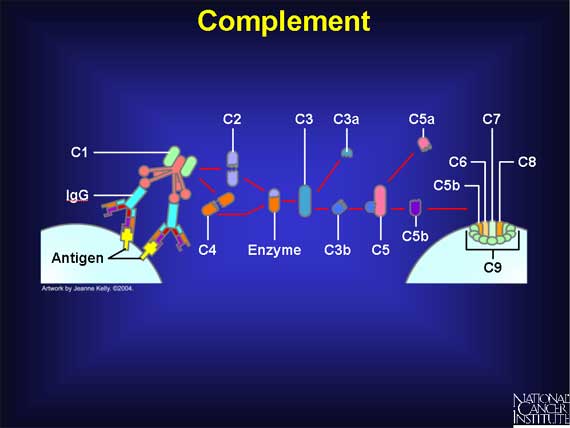|
The complement system consists of a series of about 25 proteins that work to "complement" the work of antibodies in destroying bacteria. Complement also helps rid the body of antigen-antibody complexes. Complement proteins are the culprits that cause blood vessels to become dilated and leaky, causing redness and swelling during an inflammatory response.
Complement proteins circulate in the blood in an inactive form. The so-called "complement cascade" is set off when the first complement molecule, C1, encounters antibody bound to antigen in an antigen-antibody complex. Each of the complement proteins performs its specialized job, acting, in turn, on the molecule next in line. The end product is a cylinder that punctures the cell membrane and, by allowing fluids and molecules to flow in and out, dooms the target cell.

< Previous | Index | Next Slide > |